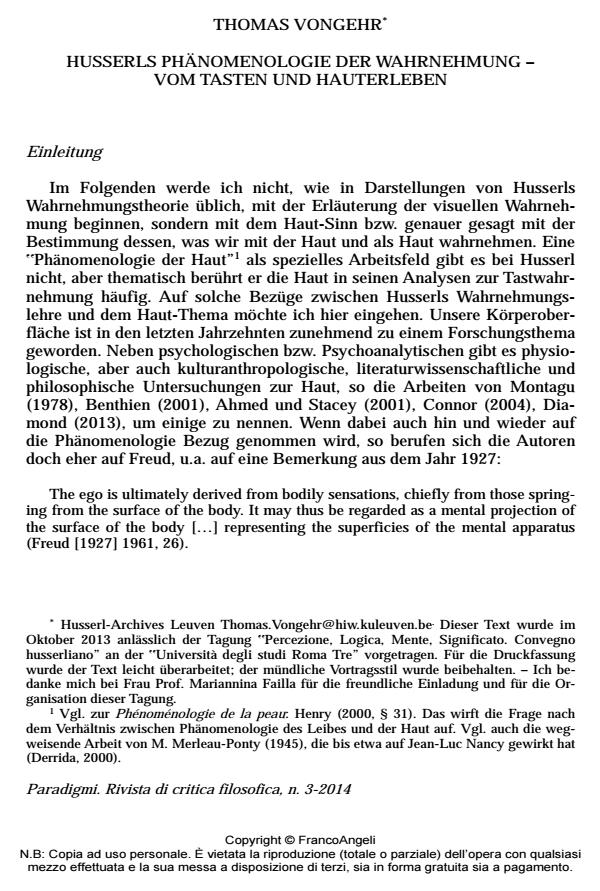Husserls Phänomenologie der Wahrnehmung - Vom Tasten und Hauterleben
Titolo Rivista PARADIGMI
Autori/Curatori Thomas Vongehr
Anno di pubblicazione 2015 Fascicolo 2014/3
Lingua Inglese Numero pagine 18 P. 19-36 Dimensione file 104 KB
DOI 10.3280/PARA2014-003003
Il DOI è il codice a barre della proprietà intellettuale: per saperne di più
clicca qui
Qui sotto puoi vedere in anteprima la prima pagina di questo articolo.
Se questo articolo ti interessa, lo puoi acquistare (e scaricare in formato pdf) seguendo le facili indicazioni per acquistare il download credit. Acquista Download Credits per scaricare questo Articolo in formato PDF

FrancoAngeli è membro della Publishers International Linking Association, Inc (PILA)associazione indipendente e non profit per facilitare (attraverso i servizi tecnologici implementati da CrossRef.org) l’accesso degli studiosi ai contenuti digitali nelle pubblicazioni professionali e scientifiche
L’autore intende sottolineare la percezione tattile della pelle come una piena esperienza fenomenologica che riguarda la percezione del mondo esterno (oggetti), del proprio io (percepire la mia pelle) e la percezione dell’altro. Natura, Sé ed intersoggettività diventano i tre fondamentali livelli dell’esperienza percettiva e coincidono con le tre questioni essenziali della fenomenologia. Con la fenomenologia della pelle si entra così in dialogo critico con modelli che restringono l’esperienza tattile della pelle alla percezione di un semplice contenitore del corpo
Parole chiave:Percezione, pelle, corpo, psicoanalisi, fisiologia, Sé, mondo, intersoggettività.
Thomas Vongehr, Husserls Phänomenologie der Wahrnehmung - Vom Tasten und Hauterleben in "PARADIGMI" 3/2014, pp 19-36, DOI: 10.3280/PARA2014-003003